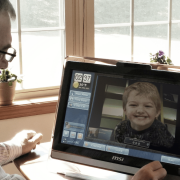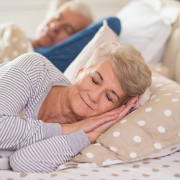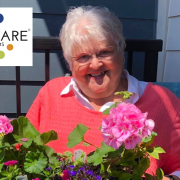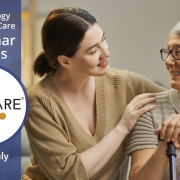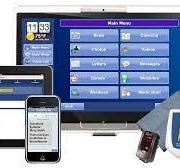To many seniors, home hospital beds offer comfort, convenience, and safety that consumer beds cannot match. The head, foot, and height adjustments simplify the nighttime chores of getting into bed and arranging oneself in a comfortable or medically advised sleeping position.
To other seniors, a home hospital bed is a medical necessity. Without its adjustments and accessories, they would not be able to convalesce or receive treatment in their home. They would have no option but to stay in a hospital or care facility.
In both cases, seniors have to decide how to pay for their home hospital bed. Sophisticated adjustable beds with head, foot, height, and tilt power adjustments are more expensive than consumer-grade beds. The highest-quality beds may not be covered by health insurance and are not covered by Medicare, in which only a limited number of durable medical equipment suppliers participate. The availability of Medicaid for durable medical equipment varies from state to state.
The remaining options are to rent or to buy. Hospital bed suppliers are happy to sell directly to consumers. Hospital bed rental agencies exist across the U.S.
There are advantages and disadvantages to both approaches. In this article, we explore the pros and cons of buying and renting home hospital beds. Because funding a home hospital bed with health insurance, Medicare, and Medicaid is so complex and variable, we’re going to focus purely on self-funded buying or renting in this article.
The Advantages of Buying a Home Hospital Bed
The most significant advantage of buying a home hospital bed is choice. When you buy, you are free to choose a bed that fits your requirements and budget.
You aren’t limited by the selection available in a rental agency’s catalog. You choose which adjustments the bed has, its design, and the accessories it includes. The best manufacturers customize beds for individual customers, offering even more choice.
Buying may cost less than renting over the long term. A home hospital bed costs several thousand dollars, and the upfront cost of buying is higher. But the upfront cost is all you pay. Renting a bed, in contrast, ties you to a contract with monthly payments that add up quickly. If a bed is rented for more than a few months, the total cost is likely to exceed the cost of buying.
When you buy a custom bed, it is your bed. That might seem obvious, but rental agencies limit how their beds are used and customized. A bed that you own is yours to do with as you please. You aren’t beholden to the restrictions and penalties that accompany a rental agreement.
The Disadvantages of Buying
In the previous section, we said that buying is better because it is cheaper over the long-term. That isn’t much of an advantage if you can’t afford to pay upfront. Renting allows people who need a home hospital bed to spread the cost over the lifetime of the bed, benefiting from features they would otherwise have to do without.
Buying is also less appealing for people who only need the bed for a short time. If a senior who is otherwise healthy needs an adjustable bed while they recover from an operation or injury, short-term rental may be the most economical option.
Buying offers more flexibility when initially deciding which bed you need. But, once you have bought the bed, you are stuck with your choice. For reasons of hygiene and health, bed manufacturers are rarely willing to take back a bed if you change your mind. When you rent, you’re free to return or exchange the bed once the initial rental period ends.
The Advantages of Renting a Home Hospital Bed
In addition to spreading the cost, renting is also useful if you want to try a bed before committing to a purchase. If you aren’t sure that a home hospital bed is a right choice for you or your loved one, renting gives you the flexibility to change your mind without a substantial financial penalty.
The Disadvantages of Renting
We have already mentioned that renting is less expensive in the short term but more costly in the long term. A rental bed of reasonable quality might cost $400 per month with a set-up fee of $100. An equivalent bed might cost $3,000 to buy. Rental payments exceed the cost of buying in around seven months.
The exact balance depends on the bed and how long it will be in service, but if you’re tempted to rent, it’s well worth working out how much it’s going to cost to rent compared to buying outright or even borrowing to buy.
Another limitation of renting is the quality and range of available beds. Beds are selected by rental agencies to maximize profit and minimize costs such as delivery and maintenance. Consequently, rental beds are rarely as sophisticated or feature-rich as those sold directly to consumers. Rental is unlikely to provide a home hospital bed with the best quality of manufacturing and range of features.
Finally, rented beds are not new beds. Unless you are lucky enough to be the first renter, your bed will have been used before, perhaps by many different patients. Rental agencies clean and disinfect beds before they are sent to a new renter, but the bed’s motors and mechanical components have a limited life and may wear out. Beds may also have damaged paint and other age and use related damage.
In Conclusion
The decision to rent or buy depends on your circumstances and what you expect from your home hospital bed. Renting is an excellent option for seniors who need a bed immediately but who can’t afford to pay the full price. However, if you can pay upfront, buying gives you access to a greater range of beds with more advanced features and lower long-term costs.
Author Bio
Aaron Goldsmith is the Founder of Transfer Master, which manufactures custom electric adjustable hospital beds for home and medical use.

